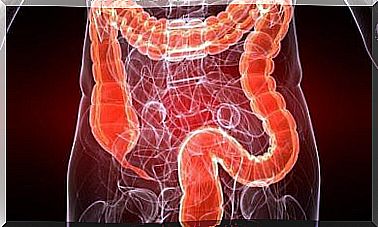Laryngectomy: Why Is It Done And What Are Its Repercussions?
Laryngectomy has a major impact on young people and women. Change in the voice gives rise to a process of adaptation which is demanding and requires emotional and psychological support.

Laryngectomy is a surgical procedure in which the larynx is completely removed. This type of operation causes great changes in those who are subjected to it. Most notable are loss of pharyngeal voice, alterations in smell, changes in breathing, and changes in personal appearance.
Those who undergo a laryngectomy must have a tracheostomy for life. This is an opening in the trachea, with a tube inserted, which facilitates the passage of air to the lungs. This implies permanent care.
The effects of Laryngectomy are very varied and involve several daily limitations. These patients need to re-educate their voice and may have difficulty swallowing food and exerting effort.
Who should have a laryngectomy?

There are two different pathways in the larynx: one leads to the stomach (esophagus) and the other to the lungs (larynx and trachea). The larynx shares a common space with the esophagus: it is the pharynx. Laryngectomy removes the larynx and, as a result, cuts the connection between the mouth and the lungs.
Removing the larynx is a very severe operation that is only carried out if there is no other alternative. When does this happen? In the following cases:
- There is severe trauma in the larynx, that is, considerable damage caused by gunshot injury or some other such factor.
- The patient has cancer of the larynx.
- There is radiation necrosis. This is severe damage to the area from the radiation therapy.
What does this process consist of?
To perform the laryngectomy, you need general anesthesia. The surgeon makes incisions in the neck and, through them, removes the larynx. In some cases, it may also remove part of the pharynx and / or lymph nodes.
After the larynx is removed, the doctor will make a hole in the front part of the trachea. It is called a “stoma,” which is similar in diameter to a five-cent coin. Then a tube or cannula is inserted to connect the lungs to the outside.
Finally, we proceed to a suture with surgical stitches. Usually, drainage tubes are placed in the neck to remove fluids and blood from the operated area. The patient must then go to a room to recover.
Sometimes a tracheoesophageal puncture (PET) is done during a laryngectomy. It is a small hole in the windpipe and esophagus. Then, a valve is placed there so that the hole remains open. The goal is to keep food out of the trachea without blocking the passage of air.
Possible risks
Any operation involves risks. Some of the most common are hemorrhage, infection, allergic reaction to drugs, breathing problems and heart problems. With laryngectomy in particular, there are other risks like the following:
- Bruising or pooling of blood from ruptured thyroid arteries.
- Appearance of fistulas. These are abnormal conduits or connections between the pharynx and the skin.
- Anastomotic stenosis. This is the name given to the disease which causes the opening in the stomach to become too small.
- Filtration. It occurs between the prosthesis of the tracheostomy and the tracheoesophageal perforation (PET).
- Damage in the trachea or esophagus.
- Difficulties in speaking.
- Difficulties in swallowing food.
What should be taken into account before a laryngectomy?
Before the laryngectomy, a series of tests and examinations should be performed. Usually, blood tests and sometimes imaging tests are ordered. The doctor will also do a complete physical examination.
The patient should see a swallowing therapist and speech therapist. This will allow her to prepare for the changes that will take place after the operation. In addition, he must be able to count on the advice of a nutritionist. If he smokes, he should stop smoking and receive support and information to do so.
The person should tell the doctor what medications they are using. In addition, she should indicate whether she habitually drinks alcohol and, in the case of women, whether she is pregnant or may possibly soon be pregnant.
We must also add the following indications:
- All drugs that interfere with blood clotting should be avoided. This measurement should be taken one week before the operation.
- The patient should not eat or drink 12 hours before the surgery.
- If the person has a beard or mustache, they should shave.
- Follow any other indication indicated by the doctor.
What aspects should be taken into account after the laryngectomy?

After the laryngectomy is performed, the patient is most likely to spend several days in the intensive care unit. It will have to feed itself through a tube that goes from the nose to the stomach. He will receive oxygen through the stoma, along with pain relievers.
When his condition stabilizes, he will be transferred to a hospital room and will have to stay there for at least 10 days. During this time, he will be taught to talk and to eat again. We will also help him get used to his new way of breathing.
After going to the hospital, he will have to continue his rehabilitation process. This includes the two basic aspects that we will point out to you later.
Ostomy care
There is an opening in the stoma through which viruses and bacteria can pass. It can cause infection. It is therefore essential to take care of it. The edges of the stoma should be washed with water, mild soap and gauze.
In the stoma, scabs and phlegm form. They must be removed for air to circulate adequately to the lungs. Sometimes it is enough to cough strongly to eliminate these accumulations; if this is not possible, they will have to be removed manually. The person operated on must learn to do it on their own.
It is important to have a humidifier at home because it prevents scabs from forming in the stoma. It is also sometimes recommended to use a special mask that offers humidified air; its use is temporary.
Voice rehabilitation
Laryngectomy significantly changes the sound of the voice. The air does not circulate in the same way and this causes great changes in the way sounds are emitted. It is important to develop new ways of communicating and to learn to speak again.
In the beginning, we can use non-verbal communication, through gestures or sign language. Some of the alternatives for speech recovery are as follows:
- Esophageal word. It involves catching the air from the mouth in the upper part of the esophagus and throat. Although difficult to learn, this technique can be used to talk.
- Electrolarynx. It consists of the adaptation of a device to produce a voice and a word. It will be a bit robotic but this technique is simple to use and solves the problem in the short or long term.
- TEP speech. This involves connecting a voice prosthesis to the PET valve (that of the tracheoesophageal puncture). It is placed on the stoma and allows you to speak.
Living after a laryngectomy
Any laryngectomy involves big life changes. Nevertheless, with the indications and a lot of perseverance, one can find an almost normal daily life. It is possible to breathe again, speak and eat in a way that does not cause major discomfort.
The biggest risk is the blockage of the stoma because it cuts off breathing. This can be avoided by learning to react to this possibility. A person with a laryngectomy requires psychological support as they will have to deal with a lot of psychosocial changes.









